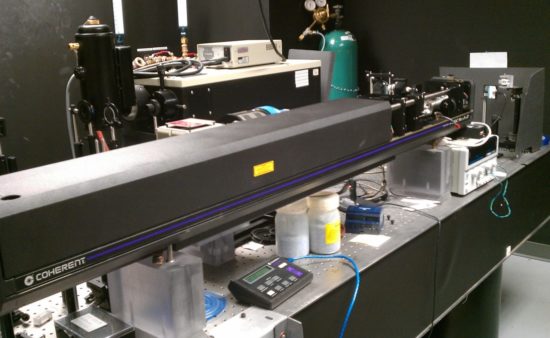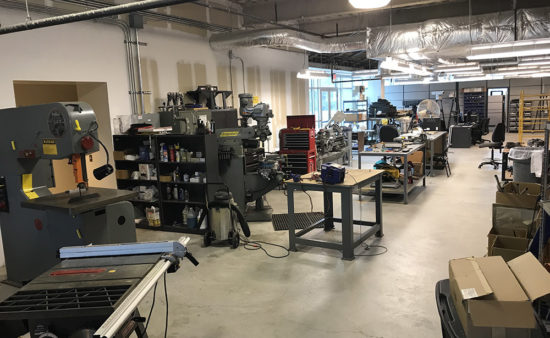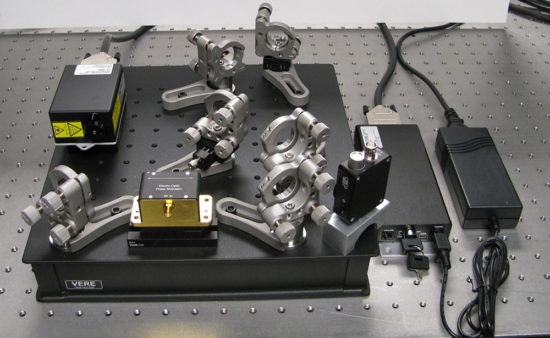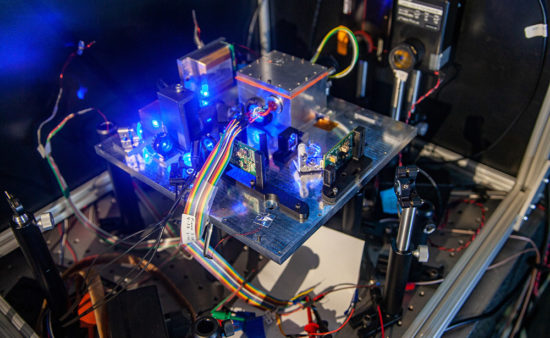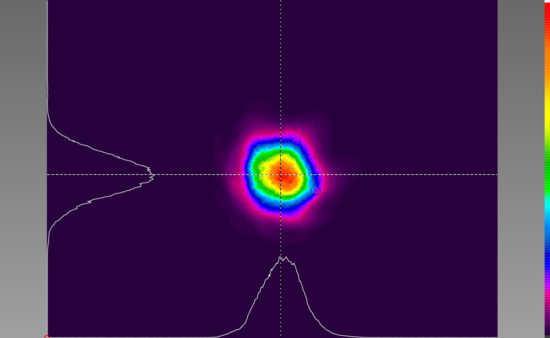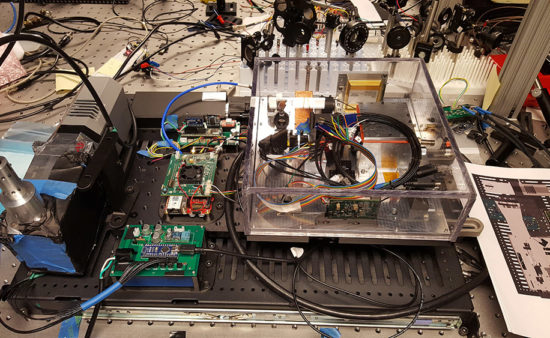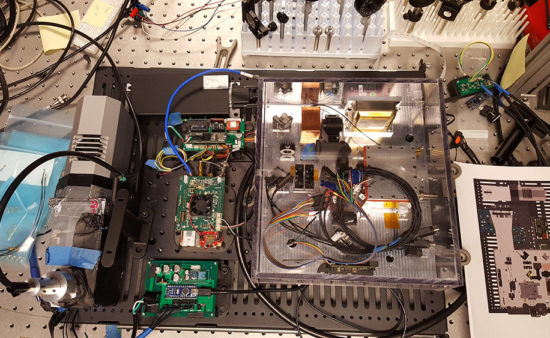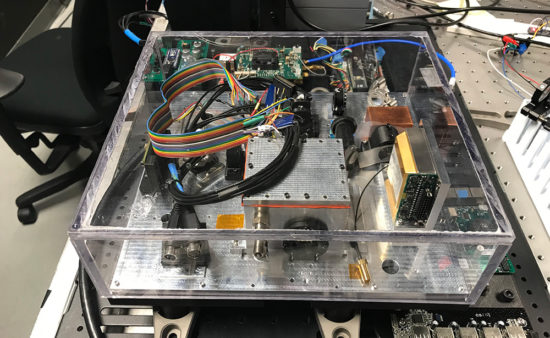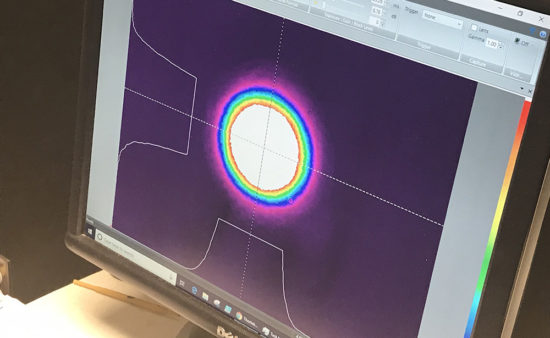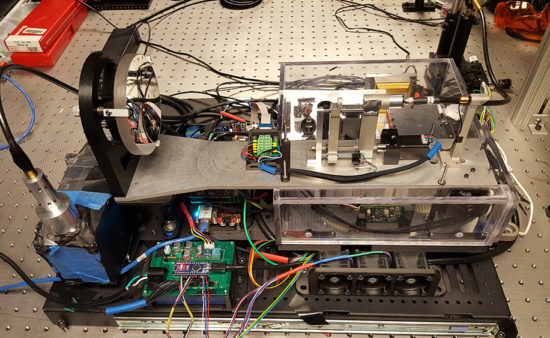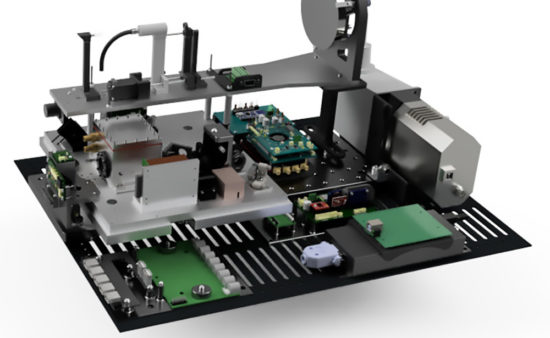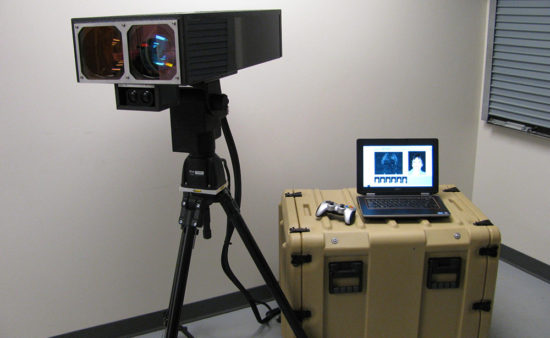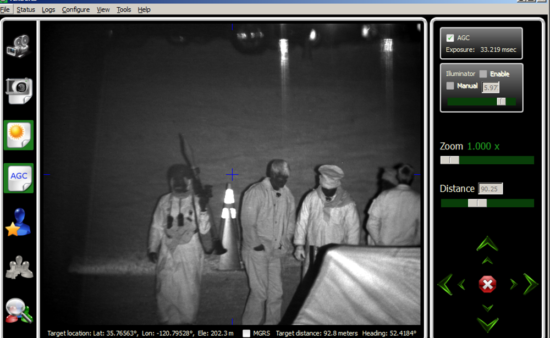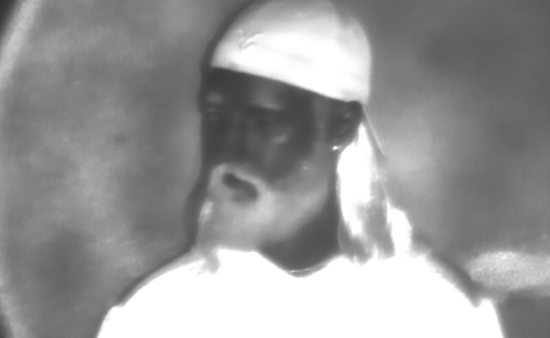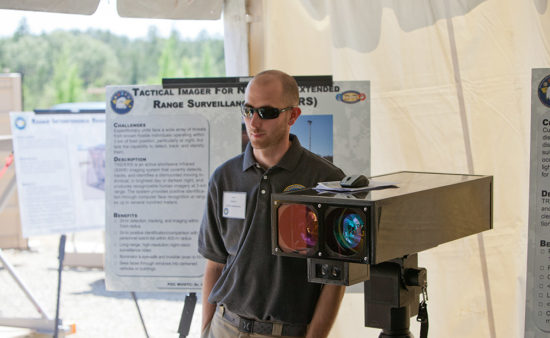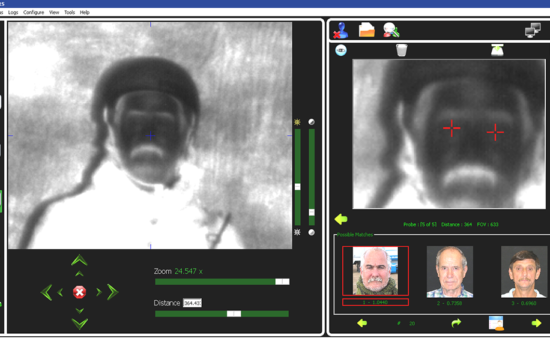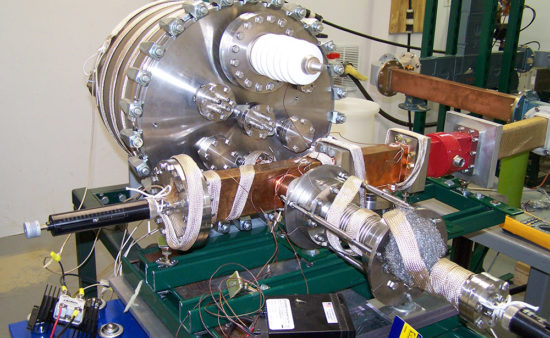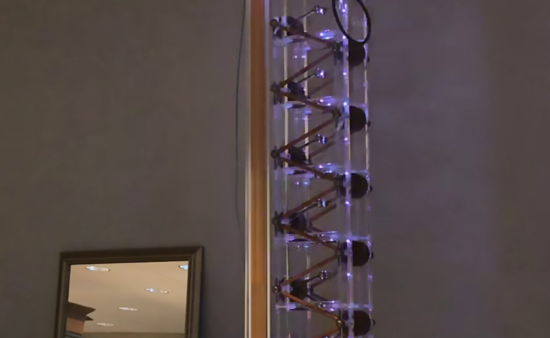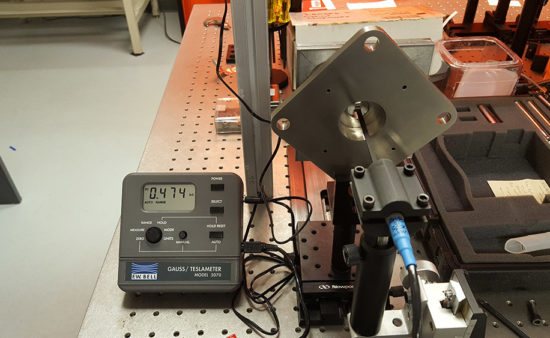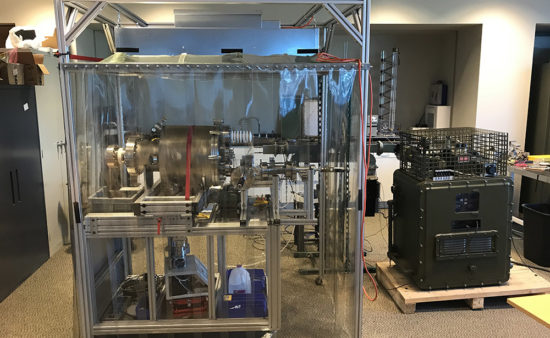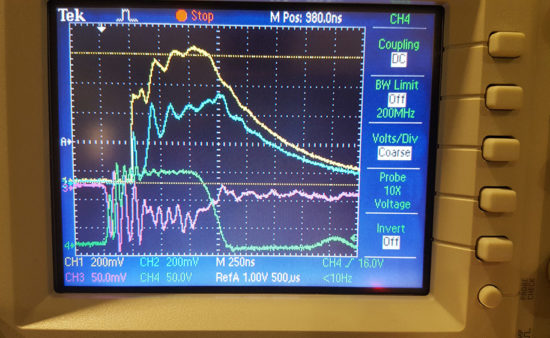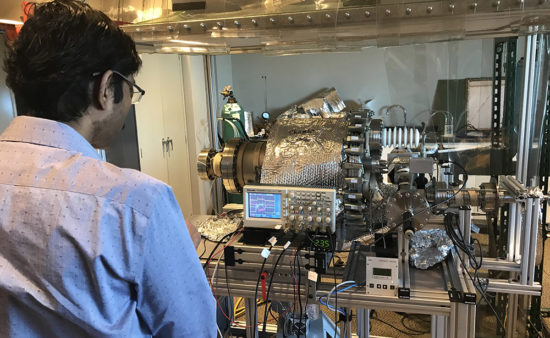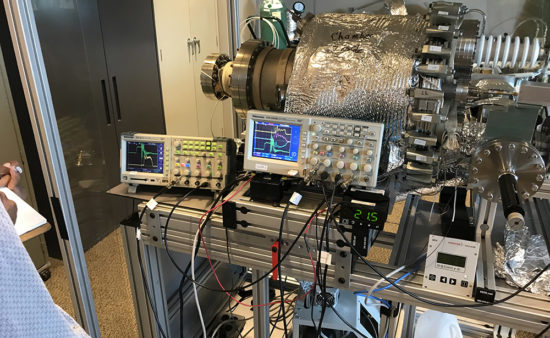The High Technology Foundation performs research and development projects in physics, electrical engineering, computer science, and related fields for a range of government and industrial customers. Working in state-of-the art laboratories in the Robert H. Mollohan Research Center, this multi-disciplinary group of scientists and engineers works closely with university researchers, industrial partners, and government customers to perform ground-breaking research and develop leading-edge technologies.
R&D Laboratory facilities include a Photonics Lab, Laser Lab, Power Electronics Lab, Wide-Area Surveillance Lab, Chemistry Lab, Electronics Shop, and Machine Shop.
Deep Ultraviolet Resonance Raman
Resonance Raman Spectroscopy in the deep Ultraviolet (UV) spectrum is a particularly powerful technique for the detection of trace explosives residues. Like visible and infrared Raman spectroscopy, deep UV Raman signatures have a high level of molecular specificity. However, a major advantage of deep UV Raman is its sensitivity to trace explosives due to strong resonances present in many explosives at wavelengths below 250 nm. Deep UV Raman scattering cross sections can be many orders of magnitude higher than longer wavelength Raman cross sections. In addition, for excitation wavelengths shorter than 260 nm, there is no interference from solar background or molecular fluorescence, leaving Raman scattering from other materials as the only source of interference.
Tactical Imager for Night Day Extended Range Surveillance
The High Technology Foundation’s Optics and Photonics team is working to develop technologies that will allow the nation’s military, law enforcement, and private security communities to detect and identify potentially hostile people at long distances, under lighting conditions ranging from bright sunlight to total darkness. The active short-wave infrared (SWIR) imaging technology combines a SWIR illuminator with a telescopic zoom SWIR camera using a completely custom optical train. The illuminator projects an invisible, eye-safe beam of SWIR light onto the target, while the camera zooms in for a high-resolution facial image. Computer face recognition software, optimized to match SWIR facial images against a visible database, can then identify the individual. The technologies currently being developed by the High Technology Foundation will be able to identify individuals at distances of several hundred meters, even in total darkness.
Power Electronics and Electromagnetics
The High Technology Foundation’s Power Electronics and Electromagnetics team is developing a high current bunched electron gun for microwave and electron-accelerator applications. The compact gun produces tightly bunched electrons with bunching frequencies in the microwave range. Since electrons from the source are tightly bunched as they exit the gun, they can be used to generate high-power microwaves by accelerating them in a DC field followed by a prompt deceleration in a tuned resonator. This approach yields a compact microwave amplifier without the need for traditional bunching cavities, drift spaces, and intervening beam optics. The present experimental device produces electron currents approaching theoretical limits of such techniques.


